| | Return to Local Producer Profiles | Contact Us
.
Kreg and Lee-Anne Alde run Broken Tine Orchard southwest of Beaverlodge near the Alberta/British Columbia border. He grows roughly 19,000 haskap plants on 35 acres. While the market for haskap is still growing in Alberta, the berry is extremely versatile and well suited to growing in a northern climate.
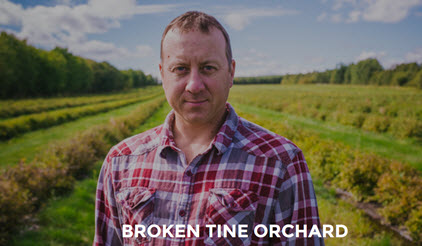
You can find Broken Tine Orchard berries in many products locally (ice cream, baked goods, wine) or you can purchase the berries directly from Kreg. Check out their website for more details or follow them on Facebook.

How Broken Tine began:
Kreg lives and farms on the original homestead of his great grandparents. His father and grandfather partnered together in a pig operation but when his grandfather died suddenly, Kreg’s dad decided to sell the pigs, break more land and go into grain farming.
While Kreg still does conventional grain farming, during succession planning for the operation Kreg was encouraged to either significantly expand his grain operation or diversify his crops to increase revenue. After looking at a few different crop options, he stumbled upon haskap berries.

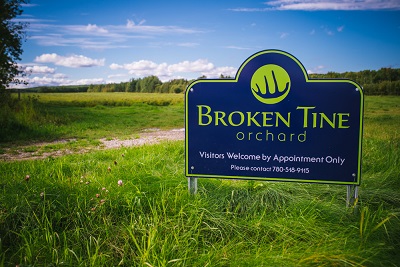
About haskap berries:
These tart but very sweet berries are 87% juice, high in anti-oxidants and vitamin C and are extremely well suited for the north. In fact, they’re rated for zone zero growing which makes them perfect for northern Alberta’s unpredictable winters. Their berries are long lasting on the plant, the bushes are cold hardy and there are no known insect pests. Though the berries are very thin skinned and need to be handled gently, they are very rot resistant. This is due in part to their high levels of vitamin C which give the berry a pH of only 2.9.
Haskap is in the honeysuckle family and while wild honeysuckle is native to Canada and can be found naturally growing in bogs, the fruit is not particularly edible. The haskap varieties grown at Broken Tine have been developed at the University of Saskatchewan and are a combination of a variety out of Siberia and a variety from Japan. These varieties were crossbred because of their ability to withstand colder weather (Siberia) and the quality of their fruit (Japan).
While birds are the major concern for crop loss, Broken Tine is far enough north to have few issues. However, Kreg does keep some scarecrow hawks above the field and plays predator bird calls to keep any interested waxwing hoards at bay. Haskap producers growing further south will often make use of netting to protect the bushes from the birds. However, unlike his southern counterparts, Kreg does have to keep a fence up around the orchard to discourage bears from filling up on the berries before hibernation.
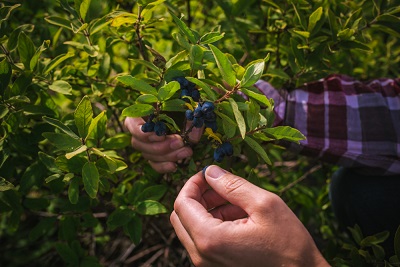
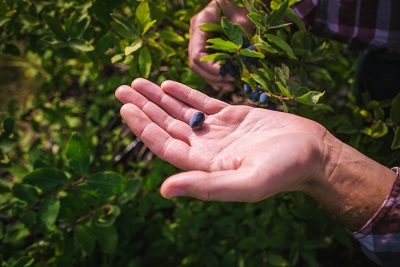
How Broken Tine processes their berries:
Kreg currently grows three haskap varieties to ensure that they have good pollination. Immediately after they’re harvested the berries are chilled as they’re transported to their -22 degree Celsius blast freezer. Once frozen solid, they are graded for quality and boxed in eight kilogram boxes. Keeping the handling of the berries to a minimum decreases the chances of contamination on such a delicate berry.
Broken Tine’s processing facility meets CFIA standards and their process of farming and handling their product is in line with Canada GAP certification. These certifications are important to Kreg as they are a simple way for his customers to understand and research Broken Tine’s processes.

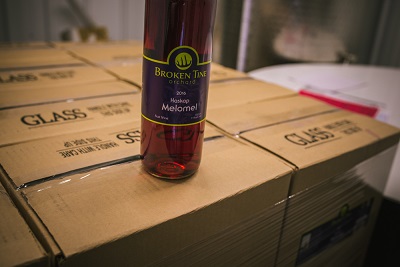
Broken Tine’s Role in the Community:
As haskap growing is relatively new in the province, Kreg has had to both educate and create his own haskap berry market locally. This has led to some creative partnerships. In addition to marketing just the berries themselves, they’re currently working with Foothills Creamery to make a haskap berry ice cream called Honeyberry Cheesecake. They also hire a baker to use their berries to make haskap pies for the local IGA in Beaverlodge. In addition to this you can also find clamshells of fresh, hand picked haskap during the harvest season for sale at the Beaverlodge IGA. In an effort to increase the market for haskap berries locally, Kreg welcomes visitors by appointment and is active in events for local initiatives like agricultural tours, Open Farm Days and Taste of the Peace.
Wine making is one of the initial reasons Kreg decided on the haskap berry and when he isn’t using his processing facility for harvesting, grading and packaging the berries, he converts it into a space to put his cottage winery licence to use. Broken Tine makes a melomel which is a honey based wine/mead blended with berries. The honey for their melomel comes from hives that are placed on the orchard itself. While Kreg doesn’t personally tend the bees, he partners with a local apiarist who cares for the bees and extracts the honey for Broken Tine. The melomel is usually available in early October, but this year’s vintage is already all sold out. Most of his wine sales are pre-ordered directly by individual customers but if you’re lucky, you’ll find some on the shelves of select Grande Prairie liquor stores.
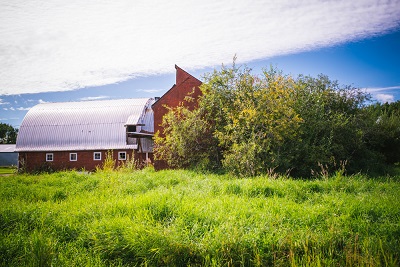
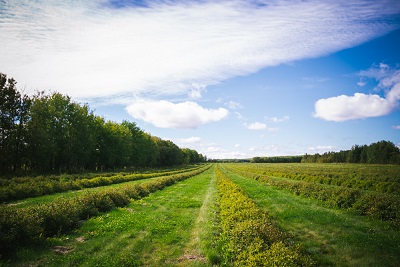
The future of Broken Tine Orchard:
Haskap is such a versatile fruit and Broken Tine would love to see their berries become a household name in other products. Kreg hopes to make more partnerships with other Albertan businesses to use the berries in their products whether that be juices, baked goods, liquors, etc. Eventually they’d like to have a bigger, onsite winery with a store and tasting room to encourage agritourism. They want people to have a full experience and to understand what goes into the berry.
\In addition to the local market, the market for haskap berries in Japan is enormous and always growing. The haskap demand in Japan is so huge that a would-be customer in Japan recently called to order 5 tonnes. Kreg had to tell him that there isn’t even 5 tonnes available from all the Alberta haskap growers combined. While they’ve seen their berries do very well in the domestic market, as Broken Tine Orchard grows, they’ll continue to consider exporting their product to Japan.
“We want people to know how the berries are raised, to know our faces and to know our quality.” – Kreg Alde
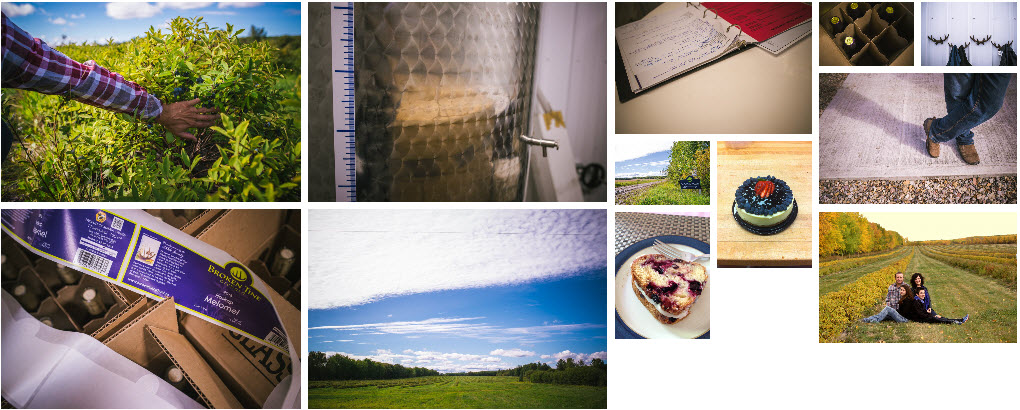

|
|